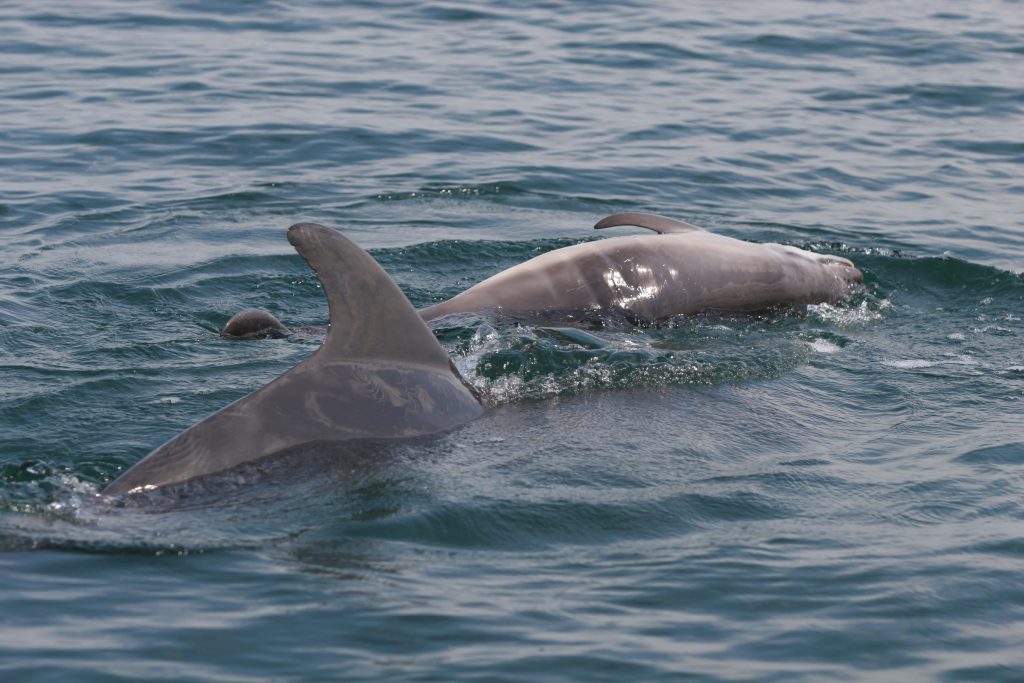In the summer of 2018, one orca mother known as J35, carried her deceased calf at the surface for a record-breaking 17 days. The calf died shortly after birth and was ultimately not recovered to perform a necropsy to determine the cause of death. Although J35 lived in the Puget Sound area, her story gained international attention as heart-breaking photos and videos circulated social media. Images of her lifting the calf to the surface using her head and pushing it forward to keep up with her pod led many to believe that she was expressing grief. Do dolphins and whales truly grieve as humans do, or is there another explanation for this behaviour?
Death-related, or “epimeletic,” behaviours, are not unheard of in cetaceans. Epimeletic behaviours include maintaining physical contact with a dead individual, remaining in the vicinity, and moving, lifting, or carrying the carcass. A review paper written by a Sea Watch Sightings Officer in collaboration with Italian and Canadian researchers stated that as of 2018 there had been over 45 published reports of cetaceans exhibiting epimeletic behaviour. A majority of these reports were of species in the family Delphinidae, which includes bottlenose dolphins, pilot whales, and killer whales. The remaining cases involved belugas and sperm whales. Only one report documented epimeletic behaviour in a baleen whale species–the humpback whale. In 92% of reported cases involving deceased calves, the individual exhibiting the behaviour was female. This female-bias makes sense because females invest significantly more energy in child-rearing than males. Some researchers have suggested that epimeletic behaviour in these circumstances could be a evolutionary consequence of higher levels of attachment between mothers and calves, and could be referred to as a display of “grief.”
Grief has long puzzled evolutionary biologists due to the many costs it poses to the living. In the animal kingdom grieving could spend valuable energy reserves, increase predation risk, reduce foraging opportunities, expose individuals to disease, and cause significant stress. In some cases, an entire social group of “escorts,” assist an individual displaying grief by taking turns carrying the carcass, protecting the individual from predators, etc. When the multiple individuals participate in epimeletic behaviour, it could significantly reduce survivability of the entire group. Given the potential costs of grieving, evolutionary biologists struggle to understand how epimeletic behaviour has persisted through time.

There are some potential explanations posed by cetacean researchers of why epimeletic behaviour is seen in the animal kingdom and specifically among cetaceans. In humans, mothers who have experienced a stillbirth benefit from having a period of grief. By holding or remaining close to the deceased infant, the mother might come to terms with her loss and reduce the trauma of abrupt separation. Given this information, one paper suggests that “grief” may be an adaptive trait that benefits the mental and emotional state of living individuals throughout the animal kingdom. Additionally, observations in land animals have shown that “forceful manipulation” including hits, and strokes have occasionally led to the resuscitation of the deceased, much like CPR. While there have been no documented cases of cetacean mothers bringing their calves back to life, some researchers hypothesize that it may be another reason why death-related behaviour has persisted despite seemingly overwhelming costs.
Ultimately, answering the question “Do dolphins and whales grieve?” is complicated. There are multiple documented cases of individuals carrying and moving deceased juveniles and calves. However, we cannot confirm that these individuals understand that the deceased are indeed dead. Moreover, evolutionary biologists remain puzzled as to why grief could persist in populations given the increased threat to the survival of the living. Ultimately, more observations and studies are required to understand if and why cetaceans grieve. If you happen to see this behaviour in the wild, please include it in your sightings report and send photos to sightings@seawatchfoundation.org.uk!
Megan
Sea Watch Volunteer
Feature Blogger
Sources
- Bearzi, G., Eddy, L., Piwetz, S., Reggente, M. A., & Cozzi, B. (2017). Cetacean behavior toward the dead and dying. Encyclopedia of animal cognition and behavior, 1, 1-30.
- “Bearzi, G., Kerem, D., Furey, N. B., Pitman, R. L., Rendell, L., & Reeves, R. R. (2018). Whale and dolphin behavioural responses to dead conspecifics. Zoology, 128, 1-15.”
- Mann, J. (2019). Maternal care and offspring development in odontocetes. In Ethology and behavioral ecology of odontocetes (pp. 95-116). Springer, Cham.
- Reggente, M. A., Papale, E., McGinty, N., Eddy, L., de Lucia, G. A., & Bertulli, C. G. (2018). Social relationships and death-related behaviour in aquatic mammals: a systematic review. Philosophical Transactions of the Royal Society B: Biological Sciences, 373(1754), 20170260.
- https://whalesanddolphins.tethys.org/
- https://www.washingtonpost.com/news
- https://www.nationalgeographic.com/animals
























